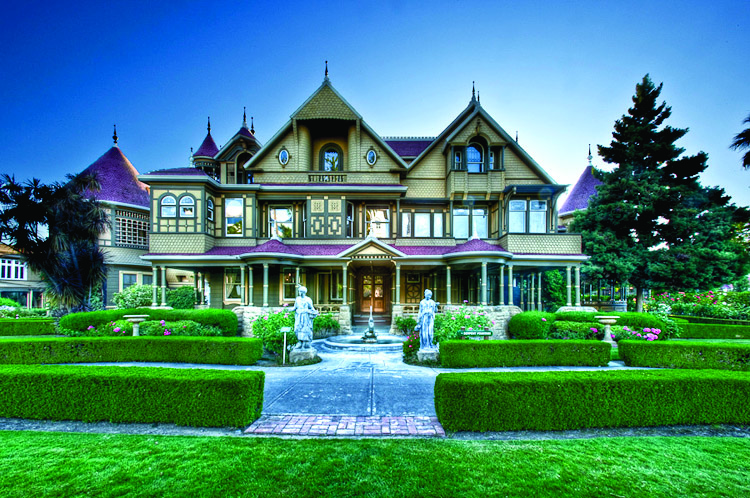When in search of ghouls, goblins and supernatural spirits, Bay Area residents know where to go: the Winchester Mystery House.
In honor of Halloween, we’re taking a look at the architecture of this spooky dwelling. Built in the late 1800s, the haunted house reflects the restless premonitions of the Northeastern socialite Sarah Winchester, who, upon the death of her daughter, took the advice of a Boston medium to appease vengeful spirits by building an estate in San Jose, Calif. The form and function of the Victorian building play the most vital role in crafting a spine-chilling atmosphere.
The Winchester Mystery House is a window into the disturbed psyche of Mrs. Winchester herself. Surrounded by trees, the house seems isolated from the public spaces nearby. It contains an intricate labyrinth of hallways, and numerous secret doors served as a means by which Mrs. Winchester avoided being stalked by ghosts when traveling from room to room.
Functionless architectural features dominate the house as tools of deception for dangerous spirits. There are stairs that lead to ceilings, doors that open to solid walls and chimneys that do not extend to the exterior of the house. Even though the average viewer would consider these architectural elements useless, they served a distinct, protective purpose for Sarah Winchester.
Though large in scale with imposing tall towers and high-pitched rooflines, Victorian buildings are usually planned with many small rooms, hallways and chambers. In the Winchester Mystery House, this combination creates a sense of entrapment and overwhelms the individual living or visiting inside. Unlike modern, open-plan architecture, Victorian architecture has the ability to tap into a basic human fear: not knowing what is on the other side of the wall. Though the Winchester Mystery House demands a considerable amount of upkeep because of old age, its outmoded details have remained unchanged.
Today’s haunted houses, from your local temporary structure to the more permanent Winchester Mystery House, attempt to recreate the isolation, old age and secret spaces that characterized Victorian homes and made them exude a frightening aura. Such architecture conjures up the image of eerie fictional homes, like that of “Frankenstein,” “Jane Eyre” and “Wuthering Heights.” By recreating many aspects of haunted houses from literature, today’s haunted houses evoke an immediate connection with the fear and anxiety of the everyday visitor.
Though kitschy and fabricated, haunted houses have become a national pastime and an integral part of Halloween celebrations. Each year, haunted houses like the Winchester Mystery House lure people back with the guarantee that, through experiencing strategically planned and designed space, they will leave in sheer terror.
Contact Mary Carole Overholt at mco95 ‘at’ stanford.edu.
